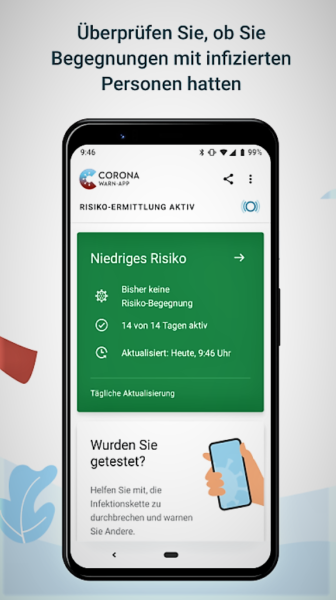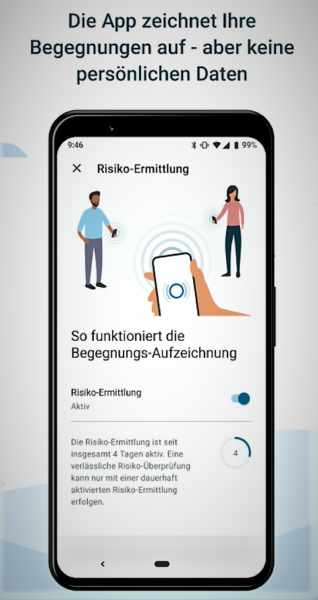A promising start
It has been available for download in the App- or Play-Store for almost two weeks now: The German Corona-Warn-App, which I also downloaded to my smartphone last week. Apart from me, more than 13 million other people in Germany have already done so, which corresponds to a percentage of 16 and, according to experts, has already had a positive effect as part of a pandemic concept with hygiene, distance, and breathing protection rules. According to researchers at Oxford University, the app alone should help contain the pandemic from a participation rate of 56 percent.
There could be even more users, because the application requires the iOS 13.5 or Android 6 version, with previous versions not used until now. But the developers are already working to increase compatibility, so this will no longer be an obstacle. With the increase of available languages, beyond German and English, the application should become more attractive for everyone, and it is supposed to be established in other European countries. Since the middle of last week, the Corona-Warn-App is also available in Austria, Belgium, Bulgaria, Czech Republic, Denmark, France, Luxembourg, the Netherlands, Poland, and Romania.
This is perhaps necessary, because in other European countries the developed apps are not as successful as their German counterparts, whose development costs amounted to about 20 million Euros. The French app StopCovid, for example, has been in existence for almost a month, but currently records only two million downloads, which is clearly too little for effective pandemic containment. A major difference between the two apps is that the French version provides for centralized storage of user data, whereas the German Corona-Warn-App focuses on decentralized data storage.
Transparency and data storage
This is the main reason for the long waiting period until the app was finally available. We all remember, for half a year we know what Covid-19 is, the first hard measures for pandemic containment were taken over three months ago. At the end of April, the German government decided against centralized and in favor of decentralized data storage. I had reported on this to you in detail. A lot has happened since then…
The developers of the two commissioned groups SAP and Deutsche Telekom now programmed a tracing app with decentralized data storage based on the Privacy-Preserving-Contact-Tracing specifications of Apple and Google via Bluetooth. The technology is strongly inspired by the DP-3T and TCN protocols and like these, apps and backend infrastructure are completely open-source under the Apache 2.0 license. At the end of May, the source code was published on the online platform GitHub. Within a very short time, tens of thousands of software experts and hobby programmers have participated in the open-source project and contributed their suggestions for improvements. “The engagement on the GitHub open-source platform was outstanding and a clear sign of the lively software engineering culture in Germany”, said Jürgen Müller, Chief Technology Officer and SAP SE Executive Board member.
With the app, users can determine a personal risk level for an infection. The app sends out anonymous short-term identification numbers via Bluetooth, which can be received by other app users in the vicinity. If a user tests positive for Covid-19 and this status is recorded in the app, the other affected users are informed that they have been close to an infected person. The tracing app does not evaluate geodata and does not transmit location information. The anonymized data of the contacts are not stored centrally, but decentrally on the respective smartphone. Only the anonymized list is stored centrally and is called up regularly by the smartphones to identify possible problematic encounters.
The Corona-Warn-App does not only serve to detect encounters with infections but also offers the possibility of voluntarily transferring test results digitally. In the app, users can scan a QR code that they receive from a doctor or a laboratory and then have the result of a corona test transmitted and displayed in the application.
I like the new app very much and I can only advise you to download the app as well, if you haven’t already done so!
#stayhelthy



